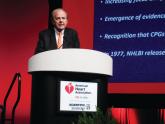When Community Health began participating in Target:BP, it had a 59% hypertension control rate (less than 140/90 mm Hg). By September 2017, roughly 18 months after starting with Target:BP, this had risen to 65%: a significant improvement, but still short of the program’s goal of 70%. Community Health had hoped to reach 70% by the end of 2017 – though as of January 2018 it remained unclear whether this had been achieved – and 80% control by the end of 2018. Reaching these goals is not completely unrealistic, but it’s challenging, Dr. Amofah said, because many of the patients at Community Health of South Florida are underserved, have poor access to medicine, have other survival priorities in their life, and have comorbidities that require attention and complicate their lives.
Dr. Amofah also serves as medical director for Health Choice Network, which includes 44 health organizations in 21 states with about 1 million patients. Of these 44 organizations, 16 have decided to participate in Target:BP, he said. The nonparticipating organizations decided to not be part of a structured program such as Target:BP and many also lacked the infrastructure that implementing Target:BP requires. But he has still tried to sell his colleagues at the nonparticipating organizations on the Target:BP approach, even if they don’t formally participate.
“Not having the support that Target:BP provides can prevent an organization from achieving its best potential,” he said. With Target:BP you get support and reinforcement. “It makes a difference; it creates a focus” Dr. Amofah said.
“Target:BP provides a lot of important guidance and tools that can help providers implement necessary changes” to aid BP control, said Jordana B. Cohen, MD, a nephrologist and hypertension researcher at the University of Pennsylvania in Philadelphia. Her practice does not participate in Target:BP, but she said that she is planning to look into joining.
